Aleksandar Petrović (Sasha Petrović)
 Born in Paris on January 14th, 1929, Sasha always considered himself cosmopolitan, not due to his Serbian origins, but from his ancestors’ close relationship and roots in France.
Born in Paris on January 14th, 1929, Sasha always considered himself cosmopolitan, not due to his Serbian origins, but from his ancestors’ close relationship and roots in France.
Reading and writing were his passions from a young age. He imagines characters, their tragedies, and the scenery of his make-believe screenplays.
His older brother dies in 1947, twelve years after his younger brother. These deaths become anchored in Sasha’s memory forever. Death appears in all his films, even the shortest ones. Despite his family’s tragedy, he successfully passes the baccalaureate his final year of high school. He goes to the Academy of Film in Prague (FAMU), but is forced to interrupt his studies in 1948 for political reasons (Soviet-Yugoslav tensions) , and returns to Belgrade . Three months later his father dies.
Feeling he was now responsible for his family, he starts working as an assistant director, then director, screenwriter, and art and cinema critic. He continued his studies at the Belgrade Philosophy Faculty and obtained a degree in Art History. In 1955, his father’s ex-colleagues from the Parisian Ecole des Ponts et Chaussées procured him a scholarship for six months. He then met Luis Buñuel.
1955: produced with Vicko Raspor the documentary Uz druga je drug (Côte à côte). He received his first directing award at the Pula Festival in 1956.
In 1957 he writes and produces his first short film, Flight above the marshes (French: Entre le ciel et le marais, Serbian: Let nad močvarom). The film represents Yugoslavia at the Cannes Film Festival, a first, and is well received by critics.
Petrović released another short film in 1957, Petar Dobrović with Vicko Raspor, about the life and works of the Serbian painter.
In 1958, Petrović produces The last exit (Posladnji izlaz) with Vicko Raspor. This becomes his only movie that he does not appreciate.
Beginning in 1958, Aleksandar Petrović will work on the synopsis, script, scenario, dialogue, musical choice, and the scenery. From then, he was a complete author for all his movies.
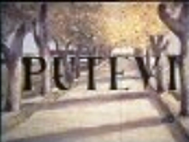 In 1958, he releases The roads (Putevi), a film about the life and works of Serbian painter Sava Sumanović. It receives the Grand prix of the Pula Festival and the Grand Prix of the ville de Tours.
In 1958, he releases The roads (Putevi), a film about the life and works of Serbian painter Sava Sumanović. It receives the Grand prix of the Pula Festival and the Grand Prix of the ville de Tours.
War Against the war (Rat ratu), another short film, is produced in 1960 and describes the workers’ struggle in Serbia before World War Two.
In 1961, Petrović produces Two- When love has gone (French: Elle et Lui) (Serbian: Dvoje). This film marks the beginning of Yugoslav modern film. Aleksandar Petrović intimately and poetically presents the tormenting relationship of a couple. It is the first socialist cinematographic work that, in Petrović’s own manner, matches the developments in movies of the new global cinematographic school of thought (the “nouvelle vague”). French and Italian write rave reviews in 1962 when the film is projected as an official selection of the Cannes Festival.
July 25, 1961: his only son Dragomir (Dragan) is born. Shortly after his birth, Dragan suffers from encephalitis, that left him handicapped for the rest of his short life. Petrović dedicates his life to his son, ensuring a relatively normal childhood. With his wife Branka, Petrović brings Dragan across the world to find the best treatments. His dedication to his son affected his career decisions multiple times.
In 1962, Aleksandar Petrović is named Professor at the Belgrade Academy of Cinema, Theater, and Television. He sits as the head of direction.
1963: The Days (Dani) is a meditative film on solitude, suddenly broken by the brief encounter of a young wife and a student. After When love has gone and The Days, the first films to undermine Yugoslav socialist cinematography, Petrović is called the “spokesperson of new cinema in Yugoslavia” by the western press. Yugoslav newspapers see his works as capitalist decadence and an intrusion by conniving western behavior. Petrović did not believe he could easily film another full-feature film, and therefore returned to documentaries and shorts.
1964: Record– The Data (French: Procès verbal, Serbian: Zapisnik), is a film inspired by multiple current events.
1965: Fairs (Sabori): Aleksandar Petrović films different characters, the church, frescos, a wedding, a baby breast-feeding. This short film inspires Petrović and acts as an exercise for his films that followed.
 In 1965, Petrović uses Yugoslav author Antonije Isaković’s works as an inspiration for his third film, Three (Tri). Instead of glorifying anti-Nazi patriotism, which is the Yugoslav state’s favorite theme, Petrović depicts the horror and absurdity of war. Petrović said: “The film is one man’s view on war and his views on death caused by war.”
In 1965, Petrović uses Yugoslav author Antonije Isaković’s works as an inspiration for his third film, Three (Tri). Instead of glorifying anti-Nazi patriotism, which is the Yugoslav state’s favorite theme, Petrović depicts the horror and absurdity of war. Petrović said: “The film is one man’s view on war and his views on death caused by war.”
His film received critical acclaim worldwide:
“A chef-d’oeuvre” – La Stampa
“One of the most stimulating surprises from the New York Festival” – World Journal Tribune
“This beautiful film elevates Petrović as one of the best modern-day directors. Calling “Three” a chef-d’oeuvre and Petrović a master of cinema would not be an exaggeration” – Geneva Tribune
Three becomes a global hit. Aleksandar Petrović is invited to all major festivals and receives numerous prizes. Three is nominated for the Oscar for Best Foreign Film in 1966.

 1967: I Even met happy Gypsies (Skupljaci perja) is the first movie that presents the existence of Roma people in society and in everyday life. It is also the first full-feature film where Roma speak their own language. The majority of roles are interpreted by real Roma people; this is their movie. “As a child, I observed them and saw in these people faith and irrationality,” said Petrović.
1967: I Even met happy Gypsies (Skupljaci perja) is the first movie that presents the existence of Roma people in society and in everyday life. It is also the first full-feature film where Roma speak their own language. The majority of roles are interpreted by real Roma people; this is their movie. “As a child, I observed them and saw in these people faith and irrationality,” said Petrović.
“Alexander Petrović’s masterpiece is the most beautiful homage to personal liberty” – Le Combat- Henri Chapier
“A great and beautiful film, poetic, melancholic, heartwarming, tender, and strong. Pardon me for the string of epithets, but I could add another twenty or so…” – Le Nouveau Candide – Michel Aubriant.
I even met happy Gypsies receives numerous awards, including the Grand Prix special du Jury at the Cannes Film Festival in 1967, the FIPRESCI award in Cannes, which is to an international film by the International Federation of Cinematographic Press. The film is also nominated for the Oscar for Best Foreign film and the Golden Globes in 1967.
 After I even met happy Gypsies, Aleksandar Petrović becomes a world-class director in the eyes of American and European filmmakers. The French production company “Artistes Associés” wants to produce a movie with him. Petrović proposes It rains in my village (French: Il pleut dans mon village, Serbian: Biće skoro propast sveta nek propadne nije šteta), a film about a father who takes the blame instead of his son for an assassination, and Dostoyevsky’s “The Possessed.” Petrović discovers that the subject and its elements are mirrors of the political events of his time. It rains in my village is actually at odds with I even met happy Gypsies. The film depicts the problem of liberty in a world devoid of it, encased by traditions, its manners and social and psychological restrictions. The film is presented as an official selection at Cannes, prized at the Pula festival, but immediately taken out of theaters in Yugoslavia, primarily for political reasons. The Nouvel Observateur’s Michel Maurdor called it “An authentic chef-d’oeuvre.”
After I even met happy Gypsies, Aleksandar Petrović becomes a world-class director in the eyes of American and European filmmakers. The French production company “Artistes Associés” wants to produce a movie with him. Petrović proposes It rains in my village (French: Il pleut dans mon village, Serbian: Biće skoro propast sveta nek propadne nije šteta), a film about a father who takes the blame instead of his son for an assassination, and Dostoyevsky’s “The Possessed.” Petrović discovers that the subject and its elements are mirrors of the political events of his time. It rains in my village is actually at odds with I even met happy Gypsies. The film depicts the problem of liberty in a world devoid of it, encased by traditions, its manners and social and psychological restrictions. The film is presented as an official selection at Cannes, prized at the Pula festival, but immediately taken out of theaters in Yugoslavia, primarily for political reasons. The Nouvel Observateur’s Michel Maurdor called it “An authentic chef-d’oeuvre.”
Before filming his last movie, Migrations, Aleksandar Petrović considers It rains in my village his best film. The film represents Yugoslavia at the Cannes Festival in 1969. It receives the Bronze Medal for best film and best director at the Festival of Pula in 1968.
In 1969, Aleksandar Petrović receives the medal of honor “Chevalier des Arts et des Lettres” from the French government. He is the first Yugoslav artist to receive this award.
At the end of the 1960s, other Yugoslav directors preferred to cover subjects such as the daily routine of current life or communist propaganda, which the Yugoslav authorities opposed. Amidst this new “black wave” of Yugoslav producers in the 1960s, Petrovićcould not find Yugoslav producer to support his project. Petrović is persuaded of the link between film and literature, and he decides to turn to Russian literature for his next work. The Russian writer Mikhail Bulgakov’s The Master and Margarita, one of the key literary works of the 20th century, attracts him, and Petrović produces the movie with Italians and Yugoslavs.
“All power is a form of violence exercised over people…” Mikhail Bulgakov
The devil is in Moskow…
“Some can believe in the Devil’s existence, others want to proclaim that the Master, Bulgakov and I dreamed of him. I do not know what the Master and Bulgakov would have to say about this topic, since they are dead, but I am more inclined to believe in the Devil’s existence than not.” – Aleksandar Petrović
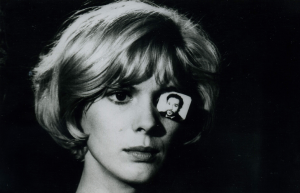 The Master and Margarita is extremely well received in Europe and the United states, and receives multiple prizes, including: at the Venice Festival in 1972 the Silver Lion, or best adaptation of a literary work from the Chicago Film Festival, as well as best male leading actor for Alain Cuny; nominated for Best Film at the Vienna festival; the “Elle” Grand Prize for Cinema 1973-74 (a survey done by the magazine to determine the best films of the year); the Grand Prix for best directorand best male leading actor at the Pula Festival.
The Master and Margarita is extremely well received in Europe and the United states, and receives multiple prizes, including: at the Venice Festival in 1972 the Silver Lion, or best adaptation of a literary work from the Chicago Film Festival, as well as best male leading actor for Alain Cuny; nominated for Best Film at the Vienna festival; the “Elle” Grand Prize for Cinema 1973-74 (a survey done by the magazine to determine the best films of the year); the Grand Prix for best directorand best male leading actor at the Pula Festival.
“Lyricism and magic. The film has the tranquil gravity of a masterpiece… A film one needs to watch and re-watch.” – Claude Mauriac – L’Express.
“The Master and Margarita – a master of a film. The Yugoslav director Aleksandar Petrović was not able to film in Moscow, where it was illegal. He instead filmed in Italy and lived in France. He has for a while now lived in disgrace in his own country, where he is nonetheless recognized as its greatest cinematographer. It has become increasingly dangerous to take artistic liberties against uncontrollable demands from authorities.” France Soir – Robert Chazal
“His success is more than just talent: he has the passion that is indispensable to make good films great.” – Le Journal du Dimanche – Pierre Billard
The Master and Margarita is shown in Belgrade and quickly qualified as anti-communist. Two days after it is first released, the Yugoslav co-producers ban the film. It is the beginning of a long period of cultural repression.
Petrović is accused of crimes against the State and its People. The futile cause is the “Plastični Isus” (Plastic Jesus) film made by his student Lazar Stojanović. Petrović authorized his student to present his film to his final jury, under the condition that he remove all anti-Tito passages. Unfortunately, Stojanović disobeyed and kept those passages. Nevertheless, he receives the highest grade by the jury of the Academy. The film is watched by the Yugoslav authorities and the Academy, and his images and dialogues are deemed to be extremely politically provocative. Stojanović is sentenced to a year in prison and Petrović is expelled from the Academy of Cinema. Authorities confiscate his passport and he becomes a public enemy of the Yugoslav state. He will remain in a state of disgrace in Yugoslavia for the following eighteen years. It isn’t until the 90s that Petrović claims this expulsion to be a political and personal machination; a tribunal will officially reinstate him as a professor on ground of “inacceptable political disqualifications.”
During these difficult years, Petrović must go on without directing. Dragan needs intensive specialized physical rehabilitation, and the Petrović family leaves to Budapest (the Yugoslav Police finally return his passport) Petrović, who is also French, then moves to France, where his sister and mother live, and works from there. He splits his time between Hungary and Paris, and is aided by the French cinematographic milieu and his family. He writes scripts, including Heart of a Dog from the Bulgakov novel, or Benia The King based on Isaac Babel’s “The Odessa Tales” “The King”.
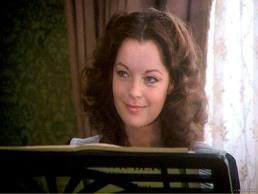 When Henrich Böll’s “Group Portrait with Lady” appeared (Nobel Prize for Literature), Petrović made sure to obtain adaptation rights. After seeing The Master and Margarita, Böll accepted to collaborate with Petrović. The Artistes Associés tell Petrović that if Romy Schneider agrees to star in the film, they would finance it. Petrović approached Schneider, and Romy accepted.
When Henrich Böll’s “Group Portrait with Lady” appeared (Nobel Prize for Literature), Petrović made sure to obtain adaptation rights. After seeing The Master and Margarita, Böll accepted to collaborate with Petrović. The Artistes Associés tell Petrović that if Romy Schneider agrees to star in the film, they would finance it. Petrović approached Schneider, and Romy accepted.
In 1977, German producers push the project, which becomes a reality. Along with Romy Schneider, Petrović directs a crew of international stars such as Michel Galabru, Brad Dourif, and other excellent Yugoslav and German Actors, such as Rudiger Vögler.
“I wanted to highlight the kindness and human warmth of a certain Germany, represented by Leni Gruyten, a woman who knows how to give and love when everyone else is taking. I believe that Böll wanted to show his compatriots, who acted selfishly for 10 years, that there was another way to live; Leni Gruyten is calm and smiling, despite the horrors surrounding her. Yesterday, at the press conference, a woman who was detained and tortured in a concentration camp told me that when seeing the film, she discovered something unknown to her, a new Germany, which gave her the feeling of being reborn. This testimony was a gift to me.” – Aleksandar Petrović
Romy Schneider receives a best German actress award from the German government; Group Portrait with Lady represents Germany at the Cannes Festival in 1977.
While living in Paris, Petrović continued to communicate with Belgrade. However, every screenplay he sent was systematically refused by Yugoslav producers. In 1975-76, Petrović writes the screenplay for Banović Strahinja (Soko), based on a medieval poem, which receives an award at the Pula Festival. The film was produced by Vatroslav Mimica. He produces two plays – Heart of a Dog in 1979 and The Master and Margarita in 1981, both based on Bulgakov’s novels.
Aleksandar Petrović continues to fight for cinema. He is the founder and member of the European Academy of Cinema and Television. He presides or is a jury member for multiple international film festivals, is a member of SACD, and co-founds “FEST”, an international film festival in Belgrade.
“Migrations exist. Death does not!” – Miloš Crnjanski
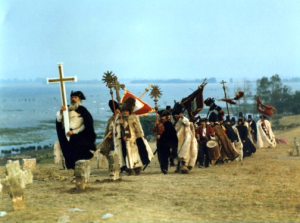 Finally, in 1987, Aleksandar Petrović films Migrations (Seobe). The movie is inspired by a famous novel by Yugoslav writer Miloš Tsernianski, which received the award for best foreign novel in France in 1986. Petrović has been working on this project since 1957, when he first contacted Crnjanski who was exiled in London. After long years of waiting, Petrović could now direct Isabelle Huppert, Richard Berry and Avtandil Maharadze (the Georgian actor from “Repentir”) who are the main trio in the movie. Petrović is finally happy!
Finally, in 1987, Aleksandar Petrović films Migrations (Seobe). The movie is inspired by a famous novel by Yugoslav writer Miloš Tsernianski, which received the award for best foreign novel in France in 1986. Petrović has been working on this project since 1957, when he first contacted Crnjanski who was exiled in London. After long years of waiting, Petrović could now direct Isabelle Huppert, Richard Berry and Avtandil Maharadze (the Georgian actor from “Repentir”) who are the main trio in the movie. Petrović is finally happy!
This spectacular productionis one with two ends: one full feature film is the first part of the work, and the second is a eight episode television series.
“I always thought that Migrations was a seminal work”, Petrović said. I always wanted to adapt it for the screen. First of all, because it is a wonderful story whose heroes epitomized the margins of Central Europe in the 18th century – and what is marginalized is always interesting.
Second of all, I find it very relevant to the present day. There is a striking parallelism between this time and our own; a time of migrations and population mixing, where the old rules have fallen without giving rise to new ones, where values have been lost and where people live in disorder and indiscipline, looking for something that has not yet been born. It is this time of change and confusion during important moments of mutation that I want to express, all the while conserving a writer’s rhapsodic tone.” Aleksandar Petrović – Figaro Magazine – G. Suffert
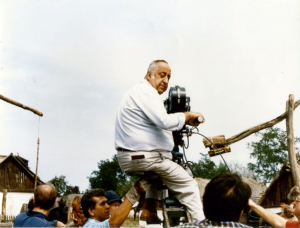 “Petrović has made a lyrical and baroque fresco of stupefying force. A sort of Romanesque and apocalyptic power sweeps the characters in the chaos of battles and atrocities, in the melancholy of massacred spirits and hopeless love. You needed this director’s immense talent, the same director of I Even Met Happy Gypsies, Master and Margarita, and Group Portrait with Lady, to lead to this magnificent, audacious, and crazy work… This is a cosmic movie with plenty of brio and furor.” Jacques Doniol-Valcroze, co-screenwriter
“Petrović has made a lyrical and baroque fresco of stupefying force. A sort of Romanesque and apocalyptic power sweeps the characters in the chaos of battles and atrocities, in the melancholy of massacred spirits and hopeless love. You needed this director’s immense talent, the same director of I Even Met Happy Gypsies, Master and Margarita, and Group Portrait with Lady, to lead to this magnificent, audacious, and crazy work… This is a cosmic movie with plenty of brio and furor.” Jacques Doniol-Valcroze, co-screenwriter
The last day of filming in Yugoslavia finished at dawn on November 9th, 1987. Aleksandar Petrović found his son Dragan, 26 years of age, dying. Dragan is buried at the Père Lachaise in Paris, in the family tomb next to his father and his grandmother, Anka.
Aleksandar Petrović finds the strength to continue to work on the film and finishes filming in Czechoslovakia. He dedicates Migrations to Dragan. However, problems with French producers, and Aleksandar Petrović’s death, have kept Migrations from ever being released in France, while the Serbian version is released in Belgrade in 1994 under Milosević. Milosević believes the movie can be propagandist, but once he sees it in theaters, he immediately realizes its meaning and bans it.
“We must give film its real dimension, use the angle of art to reach the soul as well as the eyes.” – Aleksandar Petrović
The Belgrade Auteur Film Festival was created in 1995 in honor of Aleksandar Petrović. The Grand Prix of the festival is named “Aleksandar Saša Petrović”.
Aleksandar Petrović had faith in people. Curious, he loved life, his family, friends, gypsies, people, horses, dogs, space, tides, beauty he found in ugliness, painting, music, and good faith. He never tolerated lies, mediocrity, passivity, intolerance, injustice, suffering, war, and death. Aleksandar Petrović was an exceptional personality gifted with a forceful spirit and an artistic talent, indefatigable warrior for liberty and justice. His path was hard; he overcame massiveobstacles due to his extraordinary energy and his faith in others, and he was able to constantly push forward. He was modest, honest, indulgent, charitable, merciful, and filled with noble feelings. Aleksandar Petrović worked with a number of famous international actors, including, but not limited to, Romy Schneider, Annie Girardot, Mimsy Farmer, Isabelle Huppert, Ugo Tognazzi, Alain Curry, Bernard Blier, Michel Galabru, Brad Dourif, Richard Berry, Avantandil Maharadze, Erland Josephson, and with Yugoslav greats such as Velimir Bata Zivojinivić, Eva Ras, Bekim Fehmiju, Mija Aleksić, Pavle Vujisić, Ljuba Tadić, Dragomir Gidra Bojanić, Dragan Nikolić, Miki Manojlović, Olivera Vučo, Milena Dravićand many others. He was open, precise, and knew how to gain his collaborators’ and actors’ trust and respect.
Richard Berry spoke of Aleksandar Petrović: “I love the way that Sacha Petrović understands everything, sees and is able to speak about the rosaries you have, your ring, socks, the pocket you primarily use… just as much as camera movements, lighting, food… I don’t think I have ever met another director like him… he is brilliant. “
Igor Luther (director known for his work in the Schlöndorfer film “The Tin Drum”) speaks of Aleksandar Petrović: “Sacha Petrović has inspiration and I have hope that we will make a film of great importance, one that everyone will want to go see… I love his style that is not quite narrative, and the fact that Sacha has a subjective approach to the themes in Migrations he does not only portray the images and historical facts. The filming of Migrations is an enterprise of importance and such exceptional size that it necessitates specific efforts, concentration and energy; it will take a long time, with constant character, scenery and seasonal changes. I find it enchanting. I am quite pleased by it.”
Aleksandar Petrović was one of the first intellectuals to oppose Slobodan Milosević. He founded a liberal party at the beginning of the 1990s and remained its vice-president until his death. He was against nationalism and war. He was a tireless and hopeful fighter against them. Any indifference for him was a sin.
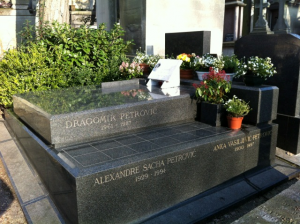 Three weeks before the premiere of Seobe (Migrations) in Yugoslavia, Aleksandar Petrović fell. He was diagnosed with a brain tumor, and died in Paris on August 20th 1994 after four months in agony. He lies today with his son Dragan and his mother Anka at the Père Lachaise cemetery in Paris.
Three weeks before the premiere of Seobe (Migrations) in Yugoslavia, Aleksandar Petrović fell. He was diagnosed with a brain tumor, and died in Paris on August 20th 1994 after four months in agony. He lies today with his son Dragan and his mother Anka at the Père Lachaise cemetery in Paris.
“If you do not love Man, you cannot make movies.” – Aleksandar Petrović
The Name Aleksandar Sacha Petrović appears in numerous international encyclopedias and specialized texts. His work is still the subject of research and theses in film departments of many renowned universities. His films are still screened around the world. He has succeeded in validating himself as a true ‘auteur’ of his work. Until the very end of his life, he has fought for truth. He left behind incredible amounts of texts not only examining film, but also expanding on visual arts, esthetics, and literature. Throughout his work, he has proved to be a true theorist of film. A number of respected film historians have dedicated books or chapters of books to Aleksandar Sacha Petrović’s work.
Right before his death, Aleksandar Petrović revealed moving poems dedicated to his son that he had previously kept for himself. He decided to publish them, along with personal memoirs, in a collection called “Tous mes amours-les périscopes aveugles”.
“All of these films have to do with death. When love has gone evokes the death of love, The Days, the death of a meeting, of a feeling, Three talks about death during the war. If I think of it, I Even met happy Gypsies, It rains in my village, Group Portrait with Lady all have the same leitmotif, death.” A.P.
He did not have time to quote Migrations, where love and death reach an apotheosis.



Leave a Reply
You must be logged in to post a comment.